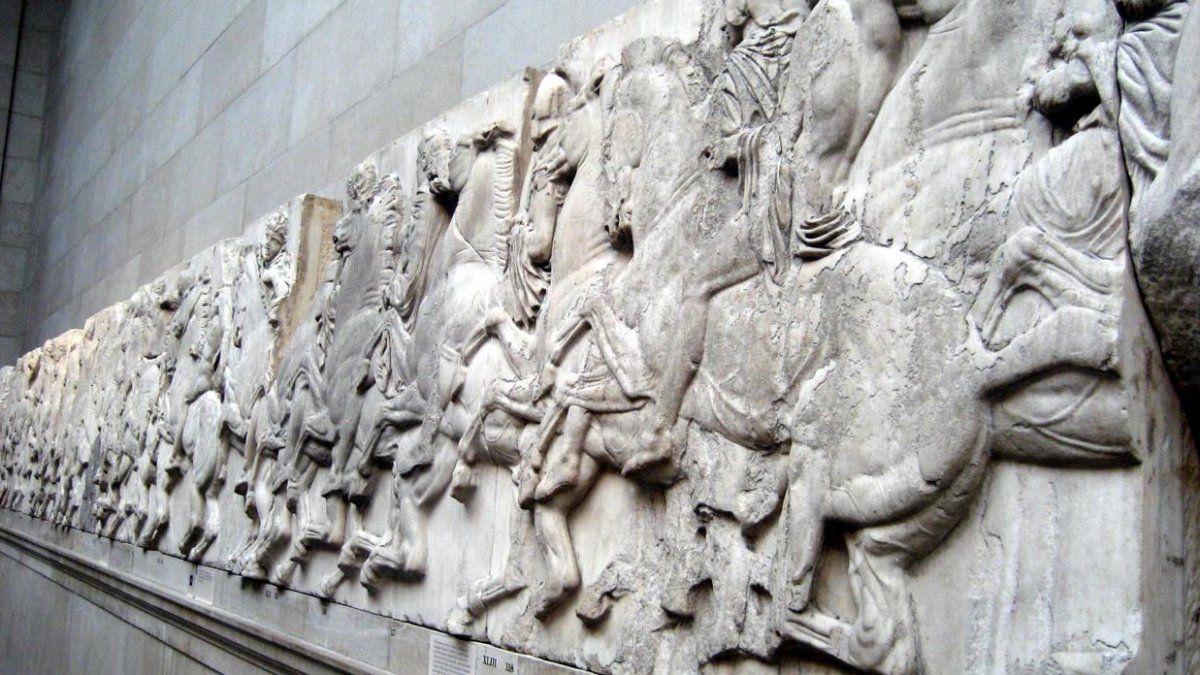Claims that “much of the frieze was removed from the rubble of the Parthenon” and “these objects were not all cut from the building as has been suggested” made by the deputy director of the museum, jonathan williamsat the annual meeting of the UNESCO intergovernmental committee that promotes the return of cultural property, were rejected by the Greek Minister of Culture, Lina Mendozawho accused Elgin of committing serial robbery, according to the outlet.
“Over the years, the Greek authorities and the international scientific community have proved with unanswerable arguments the true facts surrounding the removal of the sculptures from the Parthenon,” he quotes Guardian to Mendoni.
In turn, the minister affirms to the media that “Lord Elgin used illicit and unjust means to seize the Parthenon sculptures and export them, without actual legal permission to do so, in a blatant act of serial theft”.
Instead, the views expressed by the Museum at last week’s meeting put a new spin on the longstanding cultural dispute, just days after the UK government’s historic decision to be willing to talk about the demand for Greece, so that the Athenian marbles are reunited again, reports the British media.
The sculptures were removed from the temple with the help of marble saws with Elgin’s knowledge, as traced in the correspondence between the Scottish diplomat and the Italian artist. Giovanni Battista Lusiericommissioned for the supervision and transfer of antiquities in 1801, reports.
For Mendoni, in an international context that repatriates the treasures to their countries of origin, the campaign continues, because Greece “is willing to engage in an honest and sincere dialogue with the United Kingdom, in good faith, within the legal framework and the ethical context established by the recommendations and decisions of UNESCO”, quotes Guardian.
The British Museum founded in 1753, was the first national public museum in the world that opened its doors in 1759 covering all areas of human knowledge, and is considered a unique resource for a global audience: “the sculptures of the Parthenon are an element part of this interconnected global collection” and form part of shared world heritage and transcend political borders,” says the museum, which is not a government body and whose collections do not belong to the British government.
The 15 metopes, 17 sculptures and 75 of the 160-meter-long original frieze, in marble, 2,500 years old in dispute, decorated the temple dedicated to the goddess Athena, the Parthenon, on the Acropolis of Athens built between 450 –430 before our era. The ornamental sculptures were removed from the temple by the then British ambassador to the Ottoman Empire between 1799 and 1803, Lord Eglin (Thomas Bruce, 1766-1841) when Greece was under the rule of that empire, and are exhibited in room 18 of the London museum that exhibits them since 1817.
According to the British Parliament, Elgin acquired the pieces between 1799 and 1810, commonly known as the Elgin or Parthenon marbles or “Parthenon sculptures”, a term preferred by the museum, which acquired them in 1816 after a vote of parliament for the necessary funds. And today they are kept in this institution under the British Museum Act of 1963. However, in a 2017 British Parliament report it is stated that since the acquisition of the marbles, there was the suggestion of their return.
The long diplomatic journey for the recovery of Greek heritage formally began in October 1983 with Greece’s request to the British Government, after the support of UNESCO in 1982, which was rejected by the United Kingdom in April 1984.
Subsequently, the Greek order advocated the return of the sculptures to join the collection to be exhibited in the new Acropolis Museum (2009), presented in 2000.
In 2013 UNESCO proposed to mediate the dispute, which was rejected by the British government and the museum in 2015.
The position of the British Government is based on “issues relating to the ownership and management of the Parthenon sculptures are the responsibility of the trustees of the British Museum”as detailed in the Parliament’s report and it is something that is replicated in the current responses.
Source: Ambito
David William is a talented author who has made a name for himself in the world of writing. He is a professional author who writes on a wide range of topics, from general interest to opinion news. David is currently working as a writer at 24 hours worlds where he brings his unique perspective and in-depth research to his articles, making them both informative and engaging.




